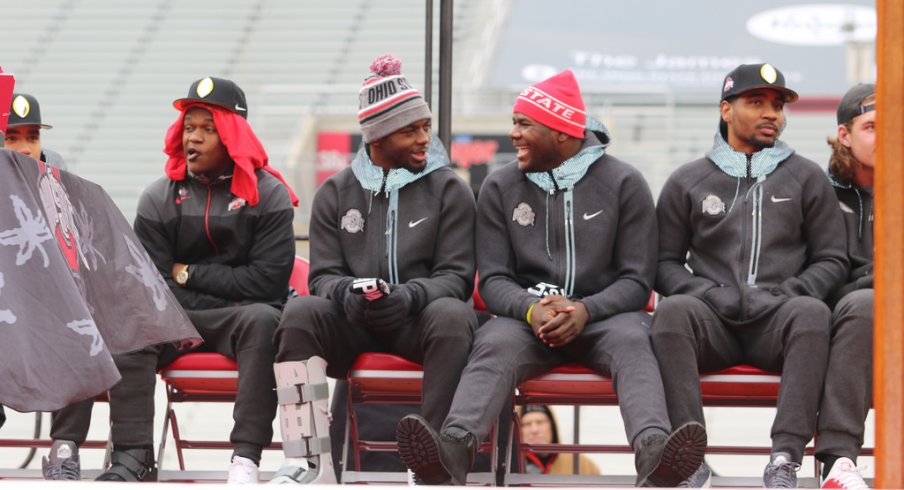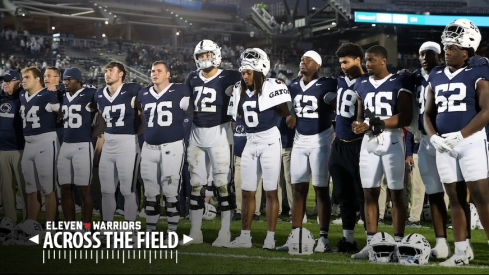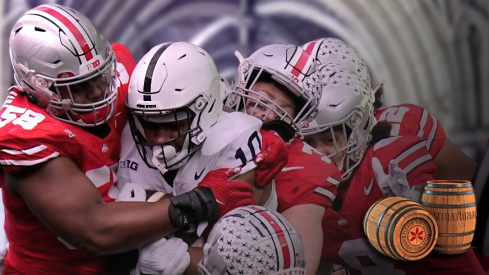Ohio State fans remember that game whether they like to or not.
The University of Florida — led by Urban Meyer, no less — employed the talents of Chris Leak and Tim Tebow and a voracious defense to viciously tear down Heisman Trophy winner and Ohio State quarterback Troy Smith in the 2007 BCS National Championship Game, 41-14.
Leak, a better passer than Tebow, finished an efficient 25-of-36 for 213 yards and one touchdown. Tebow ran the ball 10 times for 39 yards and a score, also tossing a touchdown pass just before halftime for good measure. It was a game the Buckeyes looked outpaced, out-coached and outmanned.
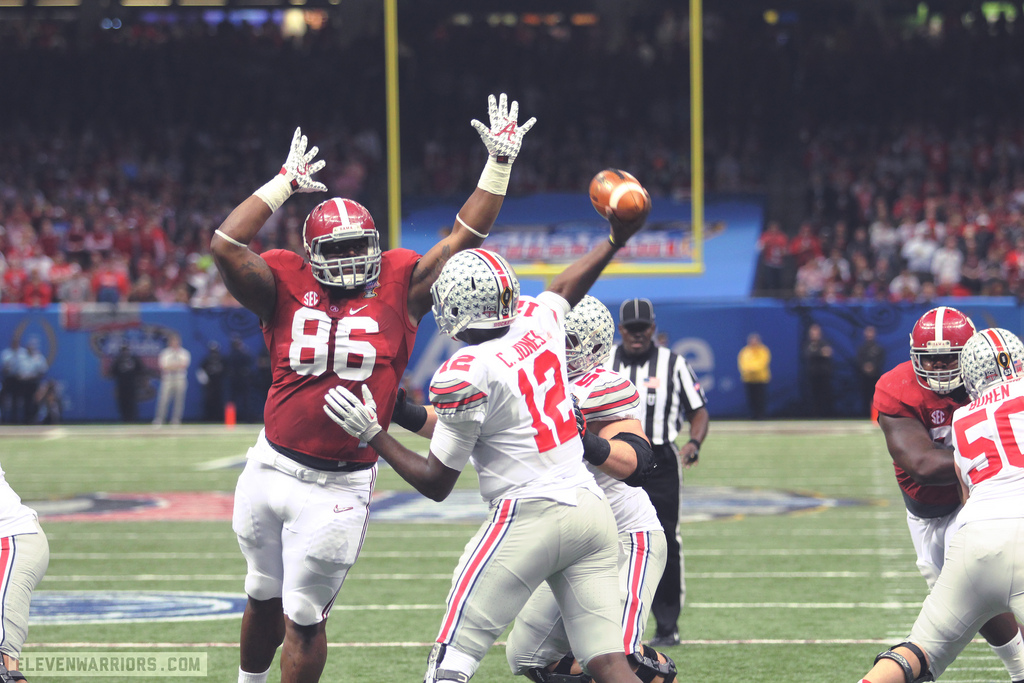
Meyer implemented the two-quarterback system throughout the 2006 season, perfecting it due to an ego-less approach by both Leak, a senior, and Tebow, a freshman. It gave defensive coordinators fits all year long en route to a 13-1 record and Meyer's first national championship.
With J.T. Barrett and Cardale Jones in the lap of the man who's now won three national titles, some think Meyer could put something similar into action in 2015. He himself hasn't ruled it out, either.
"I don't know about that; you may have a specialty quarterback," Meyer said this spring. "I've thought about that a little bit, but I think it's one day at a time."
The days keep coming and with Braxton Miller now playing H-back, the quarterback battle is a two-horse race between Barrett and Jones.
But what do they think of possibly having to leave the offense during the course of the game to give way to someone else?
"I don't think that would a great idea," Jones said Sunday at Ohio State Media Day. "But if we do that, I'm pretty sure Coach Meyer would make a way, find a way to make it work."
Added Barrett, simply: "I don't think it would be as efficient."
Florida's offense averaged 396.1 yards per game in 2006, good for the 19th best in the country. It also scored 29.7 points per game, good for 23rd best. Ohio State's offensive numbers dwarfed those by large margins in recent years, especially last season (44.8 points a game, fifth best and 511.6 yards per game, good for ninth best).
The 2014 season was special in it's own right, but making 2015 special with the thought of Meyer leading Ohio State to back-to-back titles and this time doing it with a two-quarterback system isn't really something either Barrett or Jones want to entertain.
"(Saturday) I was going every fourth set," Jones said. "The ones would go with J.T. Then the twos would go with a young guy. Then it was me with the ones. Then the other young guy would. So it would be every two or three sets I was going. After the third time I was like, 'I can't get in a rhythm.'"
It's already partly in place during practice. Meyer's said the two are as close as possible to 50/50 snaps with the first team offense. One day Jones reps with the ones, the next it's Barrett's turn. There's only so much first-team action to go around, though.
It doesn't appear to be the easiest thing to get used to, especially with how decorated each player is during their Ohio State careers. Eleven Warriors' own Kyle Jones gave his take on the quarterback battle Tuesday after viewing film on both guys, and Chris Lauderback explored the idea of a platoon system last week.
Sunday provided an opportunity to get each player's take on the idea, something Barrett has already dealt with once in his football career.
"I did that in high school," Barrett said. "We would switch every series. As a quarterback, it's kind of rough to do being that you can't get a real vibe off the defense and how they're trying to play us. They're not playing a quarterback as an individual, they're playing the offense. With that, it was hard at times, or more difficult at times, so I don't think it would be the best idea."
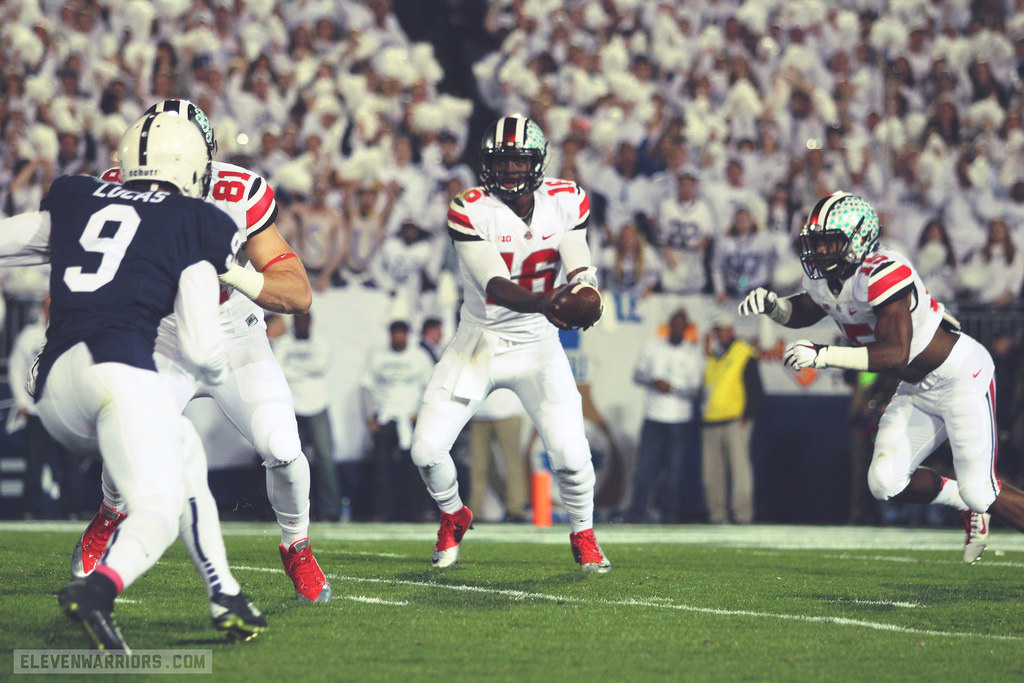
Tebow and Leak were different players than Barrett and Jones, too. Both Barrett and Jones showed they could run and pass effectively during 2014, whereas Tebow struggled throwing the ball with consistency his freshman season and Leak wasn't too lethal as a runner.
"That was a very, very different situation," Ohio State wide receivers coach Zach Smith, who coached with Meyer at Florida, said Sunday. "Down there was for other reasons. Not necessarily you had two great quarterbacks. It was just you had a running back that happened to be able to throw and then you had your senior leader quarterback. So that was a little different."
Smith didn't provide any insight that Meyer and Co. are entertaining the idea of a two-quarterback scheme — "I honestly have no idea if we would do it or how or why we would do it," he said — but putting it in place partly looks good on paper. Barrett could start drives deep in Ohio State territory, then yield to Jones in goal-to-go situations when the latter could use his immense size to power into the end zone.
The two guys permanently invested in battle this fall aren't too fond of it, though.
"A two-quarterback system, I run three plays and run off the field and he runs a drive or something like that," Jones said. "I don't know how well that would work as far as rhythm."
